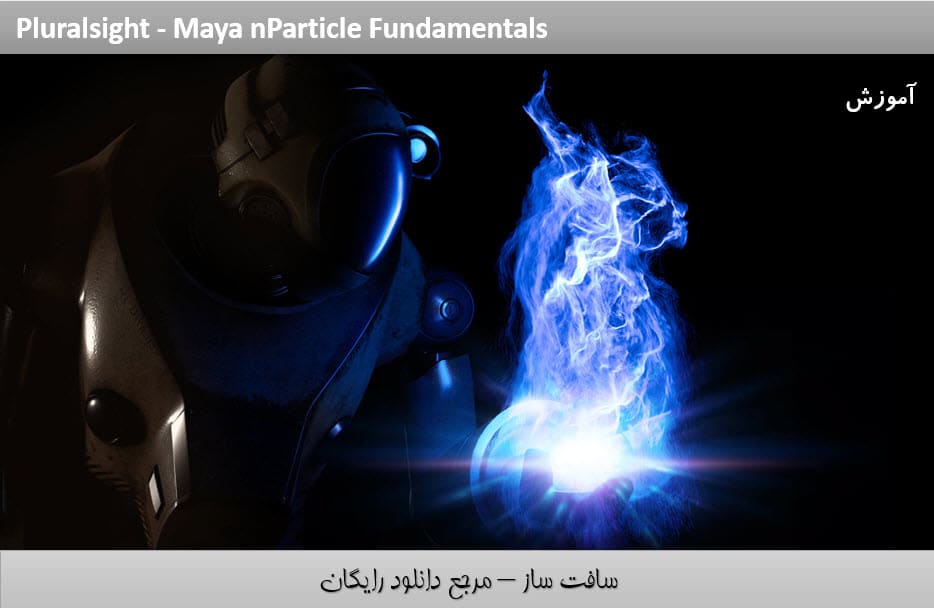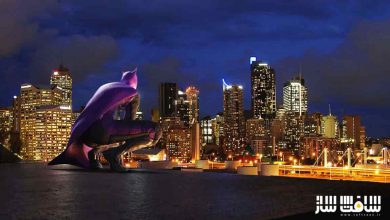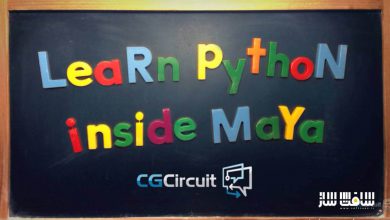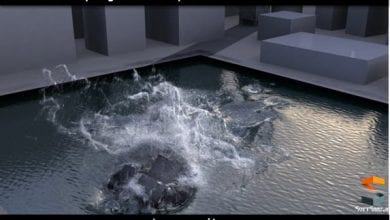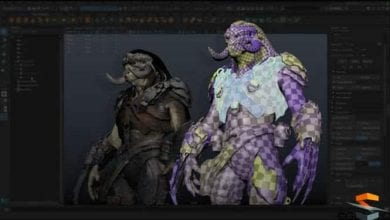آموزش اصول nParticle در مایا Maya
Maya nParticle Fundamentals
اصول nParticle در مایا
سیستم nParticle براحتی در سیستم شبیه سازی استفاده می شود که می توان یک Asset بسیار با ارزش برای شما باشد . در این دوره ” اصول nParticle در مایا ” از شرکت Pluralsight ، مربی دوره Peter Gend ،به معرفی ابزارها و عملکرد های اصلی هنگامی که با مجموعه ابزار nParticles کار می کنید، خواهد پرداخت .
برای شروع ، نحوه کار با امیتر ، نود Particle ، کار با Fields ، Colliders و Nucleus Solver بررسی می کند. سپس به بررسی انواع ذرات مالتی پل از جمله : نقطه ایی ، توپ ، ابر و آب می پردازد.
در مورد متد های رندرینگ مالتی پل با آرنولد و سخت افزارهای رندینگ مایا بحث می کند. بعد از اتمام اصول اولیه ، هر آنچه که را یاد گرفتید به صورت عملی در یک پروژه به نمایش خواهد گذاشت. با سافت ساز همراه باشید .
عناوین دوره اصول nParticle در مایا :
- مقدمه ایی بر nParticles
- کار با ذرات نقطه ایی
- کار با ذرات توپ
- کار با ذرات ابر
- کار با ذرات مایع
- ایجاد سیستم انفجار انرژی با Maya nParticles
- و …
پیشنمایش دوره اصول nParticle در مایا :
عنوان دوره : Pluralsight – Maya nParticle Fundamentals
سطح : مقدماتی
زمان کل دوره : 6.47 ساعت
تعداد فایل های تصویری : 51
سال آموزش : 2016
فایل تمرینی : دارد
مربی دوره : Peter Gend
نرم افزار : Maya 2017
زیرنویس : ندارد
Pluralsight – Maya nParticle Fundamentals
The nParticle System is an easy to use simulation system that can prove to be a very valuable asset to you. This course, Maya nParticle Fundamentals, will introduce you to the basic functions and tools you’ll find when working within the nParticles toolset. First, you’ll learn about working with Emitters, Particle Nodes, Fields, Colliders, and the Nucleus Solver. Next, you’ll explore multiple particle types including point, ball, cloud, and water particles. Multiple rendering methods will be discussed including using Arnold and the Maya Hardware Renderer. Finally, after the basics have been covered, you will produce a project to showcase everything you’ve learned about the nParticle pipeline. By the end of this course, you’ll know how to use Maya’s nParticle System to create a huge variety of simulations. Software required: Autodesk Maya 2017.
1- Introduction to nParticles 1h 14m
Overview of Maya Interface for nParticles 4m 14s
Using the nParticle Tool 8m 18s
Introduction to the Nucleus Node 9m 16s
Introduction to the nParticle Node 9m 22s
Using Fields and Forces 8m 47s
Using Passive Colliders 8m 6s
Using Omni and Directional Emitters 6m 32s
Using Volume Emitters 5m 49s
Emitting from Objects and Curves 7m 44s
Creating nParticles Caches 6m 8s
2- Working with Point Particles 1h 12m
The Basics of Point Particles 4m 24s
Point Particle Render Types 9m 5s
Particle Types and Render Engines 9m 9s
Animating Point Particles with Fields 8m 15s
Rendering Point Particles with Hardware Renderers 11m 16s
Using Arnold with Point Particles 11m 24s
Rendering with the Volume Collector in Arnold 9m 12s
Using the Particle Collision Event Editor 9m 44s
3- Working with Ball Particles 59m 52s
The Basics of Ball Particles 9m 29s
Working with Widgets 9m 47s
Using Mass & Collision Layers 8m 53s
Using Constraints and Stickiness 7m 58s
Creating a Mesh from Particles 8m 27s
Using Particle Instancing 9m 17s
Adding Rotation to Particles 5m 59s
4- Working with Cloud Particles 40m 38s
The Basics of Cloud Particles 5m 40s
Using Color, Incandescence, & Opacity 10m 23s
Working with Goals and Particles 8m 20s
Scripting Particles with Goals 8m 55s
Painting Particle Emission Rates 7m 17s
5- Working with Liquid Particles 38m 33s
The Basics of Liquid Water Particles 9m 33s
Creating a Liquid Simulation – Part 1 9m 21s
Creating a Liquid Simulation – Part 2 10m 27s
Filling Objects, Initial States, and Object Interaction 9m 11s
6- Creating an Energy Blast Effect Using Maya nParticles – Part 1 1h 2m
Analyzing Your Assets 3m 17s
Painting Your Emission Rate Map 7m 2s
Creating & Animating the Newton Field 7m 52s
Adding in the Air Field 5m 2s
Creating Turbulence Through a Volume Axis Field 7m 20s
Finishing the First Energy Effect 7m 34s
Creating a Curve Field for the Primary Energy Blast Effect 8m 19s
Adjusting the Volume Axis Curve for the Energy Blast 9m 15s
Finalizing the Primary Energy Blast 6m 47s
7- Creating an Energy Blast Effect Using Maya nParticles – Part 2 57m 27s
Creating the Energy Ball Effect Pass 9m 41s
Emitting Particles from Particles 9m 12s
Finalizing the Secondary Energy Blast Pass 5m 28s
Reassembling All of the Energy Particle Passes 8m 3s
Initial Setup for Rendering in Arnold 9m 2s
Fine Tuning Arnold Render Settings 9m 2s
Final Renders and Course Wrap Up 6m 56s
حجم کل :

برای دسترسی به کل محتویات سایت عضو ویژه سایت شوید
برای نمایش این مطلب و دسترسی به هزاران مطالب آموزشی نسبت به تهیه اکانت ویژه از لینک زیر اقدام کنید .
دریافت اشتراک ویژه
مزیت های عضویت ویژه :
- دسترسی به همه مطالب سافت ساز بدون هیچ گونه محدودیتی
- آپدیت روزانه مطالب سایت از بهترین سایت های سی جی
- بدون تبلیغ ! بله با تهیه اکانت ویژه دیگه خبری از تبلیغ نیست
- دسترسی به آموزش نصب کامل پلاگین ها و نرم افزار ها
اگر در تهیه اشتراک ویژه مشکل دارید میتونید از این لینک راهنمایی تهیه اشتراک ویژه رو مطالعه کنید . لینک راهنما
For International user, You can also stay connected with online support. email : info@softsaaz.ir telegram : @SoftSaaz
امتیاز دهی به این مطلب :
امتیاز سافت ساز
لطفا به این مطلب امتیاز دهید ?

